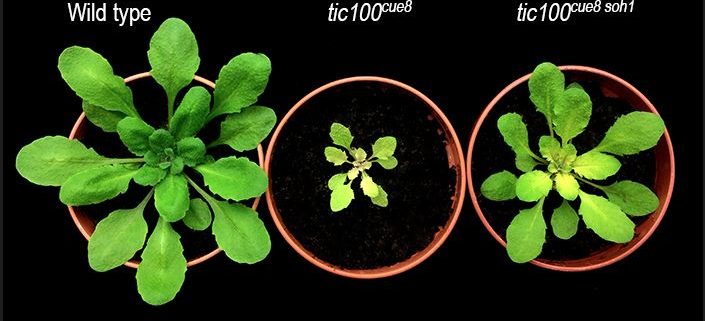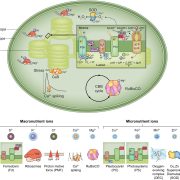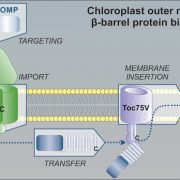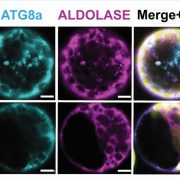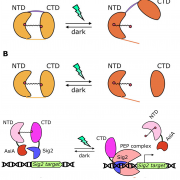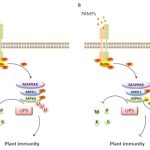Chloroplasts: reporting at the door
By Naresh Loudya, Paul Jarvis and Enrique López-Juez
Background: Plants harvest energy from the sun and CO2 from the air and convert them into the energy-rich molecules they, and eventually us, are made of. Plants do this, photosynthesis, in bodies called chloroplasts inside their cells. Chloroplasts, made of protein and membrane material, were, before plants evolved, free-living bacteria, but the synthesis of most of their proteins occurs outside them, using information carried by the cell’s nuclear DNA, so most proteins have to be brought into developing chloroplasts, across the double membrane surrounding them, through dedicated, selective channels, formed by TOC (outer) and TIC (inner envelope) proteins. The identity of those channels matters as it helps determine versions of chloroplasts suited for particular environments. Which TIC proteins constitute the inner envelope channel has been a matter of controversy.
Question: A mutant Arabidopsis plant called cue8 is slow-to-green (young leaves begin almost white) and shows delayed chloroplast and plant development. We looked for the molecular identity of the CUE8 gene. We also caused further mutations in this mutant and searched whether any corrected the defects in cue8.
Findings: We found the mutated gene causing the cue8 defects is the TIC100 gene. This is one essential component of the “TIC 1 MDa complex”, one of the two versions of the TIC import complex under debate. That complex is made of several proteins, all present at reduced levels in cue8. In laboratory assays in which proteins are imported into isolated chloroplasts, cue8 performed worse than normal plants for a photosynthetic and a housekeeping chloroplast protein. A corrective, “suppressor” mutant was identified, and it carried a second mutation in TIC100, one physically complementary to the first one. Both the single and the double (suppressed) mutant still were slow-to-green, which evidences a signalling role for import defects to the nucleus, making photosynthetic genes active or not.
Next steps: Surprisingly the grasses, including the cereals, have one core protein of the TIC 1MDa complex but not the rest (including TIC100). We don’t know how their TIC channels operate. We also need to learn how the information on the defect in protein import, which occurs at the chloroplast envelope, is relayed to the cell’s nucleus (but we do have some clues).
Naresh Loudya, Douglas P. F. Maffei, Jocelyn Bédard, Sabri Mohd. Ali, Paul Devlin, R. Paul Jarvis and Enrique López-Juez. (2022). Mutations in the chloroplast inner envelope protein TIC100 impair and repair chloroplast protein import and impact retrograde signalling. https://doi.org/10.1093/plcell/koac153


